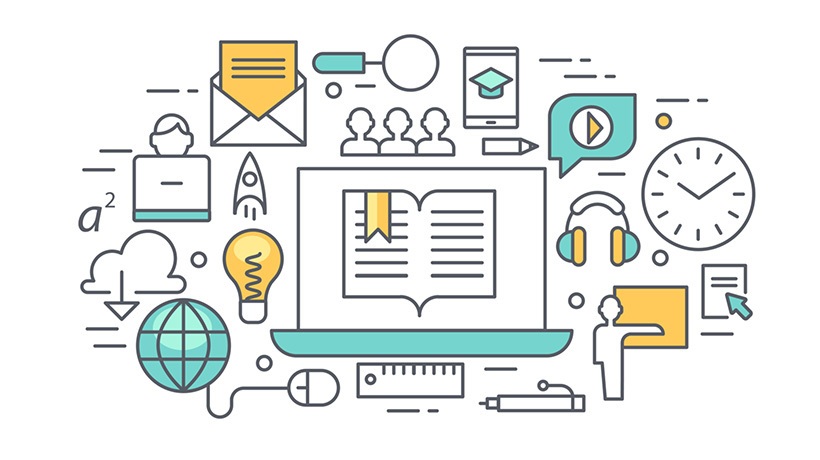
The Cornerstone of e-Learning
We offer a wide range of services. In many different types of markets, we provide IT solutions but not limited to retail, manufacturing, finance, education, and healthcare e-Learning solutions are one of our successful solutions.
We help organizations looking to train their employees, partners, and customers to switch to web and mobile-based training. Our solutions are divided into two categories e-Learning solutions and Technology solutions.
As a learning experience design company, we partner with our customers in their Digital Transformation journey. We help them deliver high-impact Learning and Performance Support solutions that offer a high engagement quotient, drive employee performance, and deliver high ROI for the Learner, Business, and Organization.
Levels of e-Learning
e-Learning Services
‣ Use Scenario-based learning.
‣ Use micro-learning to deliver critical concepts.
‣ Keep training curriculum role-based and relevant.
‣ Use interactivity tools such as gamification and reinforcement.
‣ Incorporate visual mediums such as 3D graphics and simulation.
‣ Emotional Engagement: Use a narrative that puts the learner at the center.

Level 1
The course design will reflect the corporate or organizational style guide (colors, corporate logo, etc.) and should include basic page-level navigation such as play/pause, next, back, and so on.
Courses at this level will not include audio. All courses, regardless of complexity level, will have basic SCORM functionality such as book-marking and performance tracking.
Multimedia elements (icon, layout, formatting, stock pictures, etc.) are generally simplistic and non-custom. Graphics are pulled from stock libraries, clip-art, and otherwise not created from scratch.
Level 1 courses will not have user interactivity except player interactions. Level 1 courses will not have voiceover recording or integration in the scope. Additionally, the inclusion of a post-test (true/false, multiple-choice, etc.) is easily included at courses of any level. Quiz creation and deployment are now some of the easiest items to include in a course.
Level 2
Courses at this level have more complex interactivities, and therefore will have more detailed instructional design, writing, and storyboarding in order to get it right.
Courses will have in-line interactive elements such as drag-and-drop, hot spots, categorize, and other items that require the user to manipulate objects on the page using mouse or keyboard strokes.
Level 2 courses will have 1 neutral English voiceover recording and integration will be in the scope.
Additionally, custom illustrations, graphics, and simple animations may be included.
Level 3
Courses at this level have more interactivities, and these are also more complex in their design. These may actually be custom interactivities rather than template-based standard interactivities.
The multimedia experience is also increased with sharper custom visuals, more animations, and more complex instructional design.
Level 3 courses will have 1 neutral English voiceover recording and integration will be in the scope.
Problem-solving activities like performing financial calculations, simulating software environments, developing multi-step “branching” scenarios, and so on, maybe included based on client requirement. Courses may also have more complex SCORM communication built-in.
If needed we may set the course up to include multiple topics and require topic A as a prerequisite for the learner to take topic B.
We may also include remediation that points the learner back to previous lessons within the course if an interactivity question is not answered correctly.
e-Learning

Let's Learn about e-Learning
Our team of professional E-Learner is the perfect partner for a successful business partnership.



